Esam Ghaleb
LLMs instead of Human Judges? A Large Scale Empirical Study across 20 NLP Evaluation Tasks
Jun 26, 2024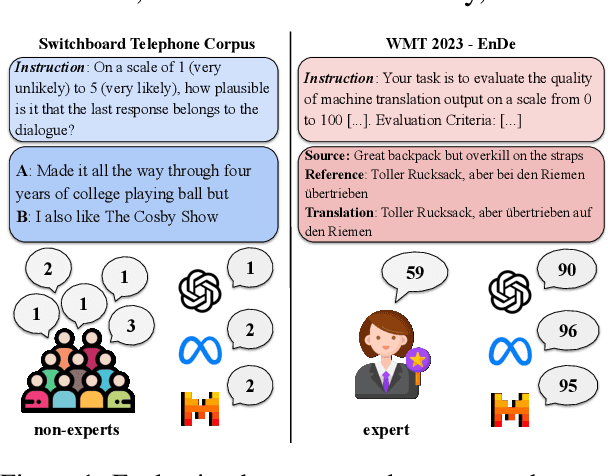
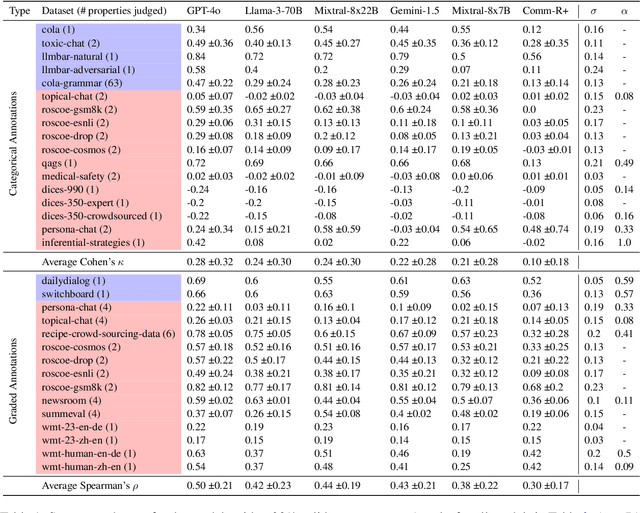
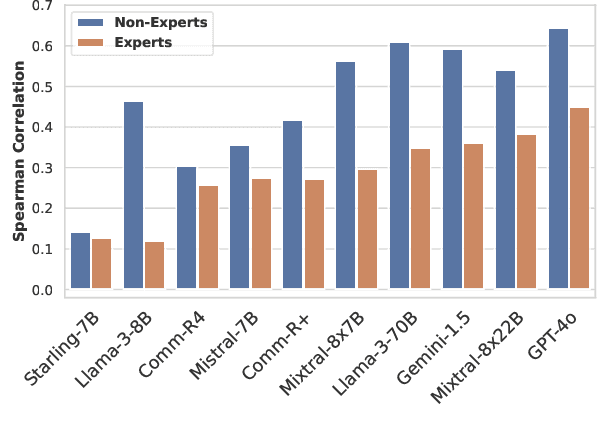
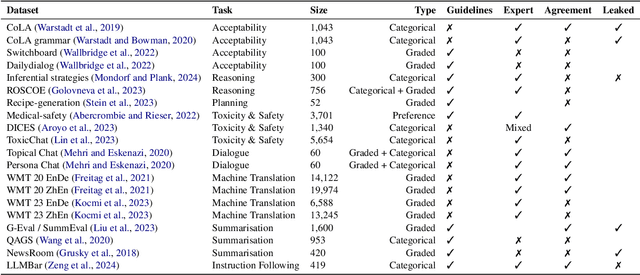
Abstract:There is an increasing trend towards evaluating NLP models with LLM-generated judgments instead of human judgments. In the absence of a comparison against human data, this raises concerns about the validity of these evaluations; in case they are conducted with proprietary models, this also raises concerns over reproducibility. We provide JUDGE-BENCH, a collection of 20 NLP datasets with human annotations, and comprehensively evaluate 11 current LLMs, covering both open-weight and proprietary models, for their ability to replicate the annotations. Our evaluations show that each LLM exhibits a large variance across datasets in its correlation to human judgments. We conclude that LLMs are not yet ready to systematically replace human judges in NLP.
Analysing Cross-Speaker Convergence in Face-to-Face Dialogue through the Lens of Automatically Detected Shared Linguistic Constructions
May 14, 2024Abstract:Conversation requires a substantial amount of coordination between dialogue participants, from managing turn taking to negotiating mutual understanding. Part of this coordination effort surfaces as the reuse of linguistic behaviour across speakers, a process often referred to as alignment. While the presence of linguistic alignment is well documented in the literature, several questions remain open, including the extent to which patterns of reuse across speakers have an impact on the emergence of labelling conventions for novel referents. In this study, we put forward a methodology for automatically detecting shared lemmatised constructions -- expressions with a common lexical core used by both speakers within a dialogue -- and apply it to a referential communication corpus where participants aim to identify novel objects for which no established labels exist. Our analyses uncover the usage patterns of shared constructions in interaction and reveal that features such as their frequency and the amount of different constructions used for a referent are associated with the degree of object labelling convergence the participants exhibit after social interaction. More generally, the present study shows that automatically detected shared constructions offer a useful level of analysis to investigate the dynamics of reference negotiation in dialogue.
Leveraging Speech for Gesture Detection in Multimodal Communication
Apr 23, 2024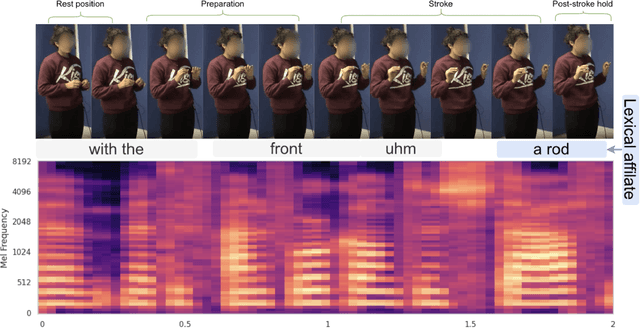
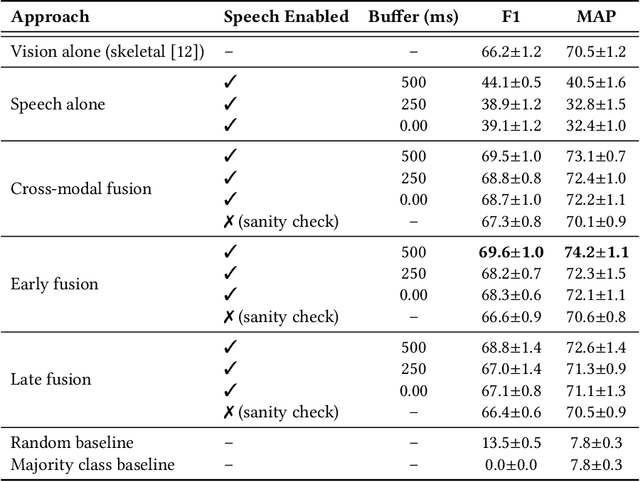

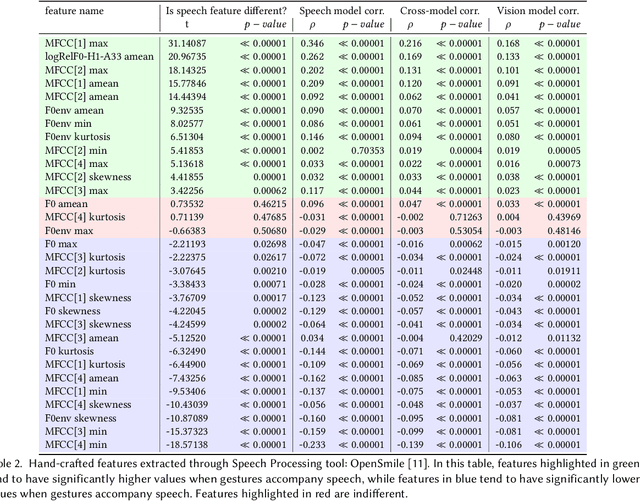
Abstract:Gestures are inherent to human interaction and often complement speech in face-to-face communication, forming a multimodal communication system. An important task in gesture analysis is detecting a gesture's beginning and end. Research on automatic gesture detection has primarily focused on visual and kinematic information to detect a limited set of isolated or silent gestures with low variability, neglecting the integration of speech and vision signals to detect gestures that co-occur with speech. This work addresses this gap by focusing on co-speech gesture detection, emphasising the synchrony between speech and co-speech hand gestures. We address three main challenges: the variability of gesture forms, the temporal misalignment between gesture and speech onsets, and differences in sampling rate between modalities. We investigate extended speech time windows and employ separate backbone models for each modality to address the temporal misalignment and sampling rate differences. We utilize Transformer encoders in cross-modal and early fusion techniques to effectively align and integrate speech and skeletal sequences. The study results show that combining visual and speech information significantly enhances gesture detection performance. Our findings indicate that expanding the speech buffer beyond visual time segments improves performance and that multimodal integration using cross-modal and early fusion techniques outperforms baseline methods using unimodal and late fusion methods. Additionally, we find a correlation between the models' gesture prediction confidence and low-level speech frequency features potentially associated with gestures. Overall, the study provides a better understanding and detection methods for co-speech gestures, facilitating the analysis of multimodal communication.
Co-Speech Gesture Detection through Multi-phase Sequence Labeling
Aug 21, 2023
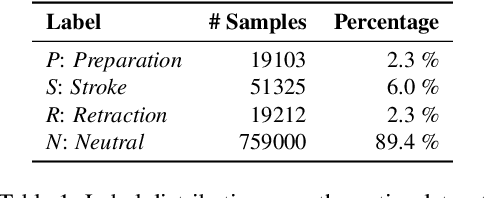
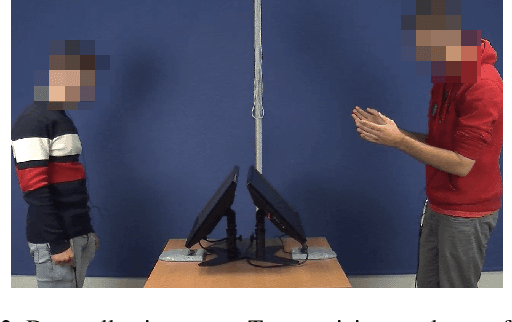
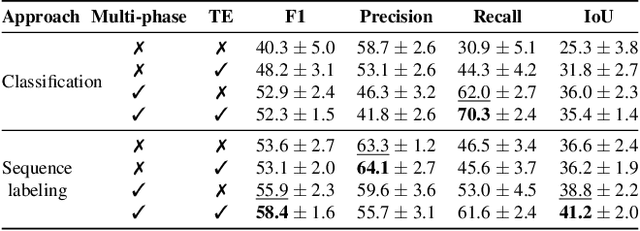
Abstract:Gestures are integral components of face-to-face communication. They unfold over time, often following predictable movement phases of preparation, stroke, and retraction. Yet, the prevalent approach to automatic gesture detection treats the problem as binary classification, classifying a segment as either containing a gesture or not, thus failing to capture its inherently sequential and contextual nature. To address this, we introduce a novel framework that reframes the task as a multi-phase sequence labeling problem rather than binary classification. Our model processes sequences of skeletal movements over time windows, uses Transformer encoders to learn contextual embeddings, and leverages Conditional Random Fields to perform sequence labeling. We evaluate our proposal on a large dataset of diverse co-speech gestures in task-oriented face-to-face dialogues. The results consistently demonstrate that our method significantly outperforms strong baseline models in detecting gesture strokes. Furthermore, applying Transformer encoders to learn contextual embeddings from movement sequences substantially improves gesture unit detection. These results highlight our framework's capacity to capture the fine-grained dynamics of co-speech gesture phases, paving the way for more nuanced and accurate gesture detection and analysis.
 Add to Chrome
Add to Chrome Add to Firefox
Add to Firefox Add to Edge
Add to Edge